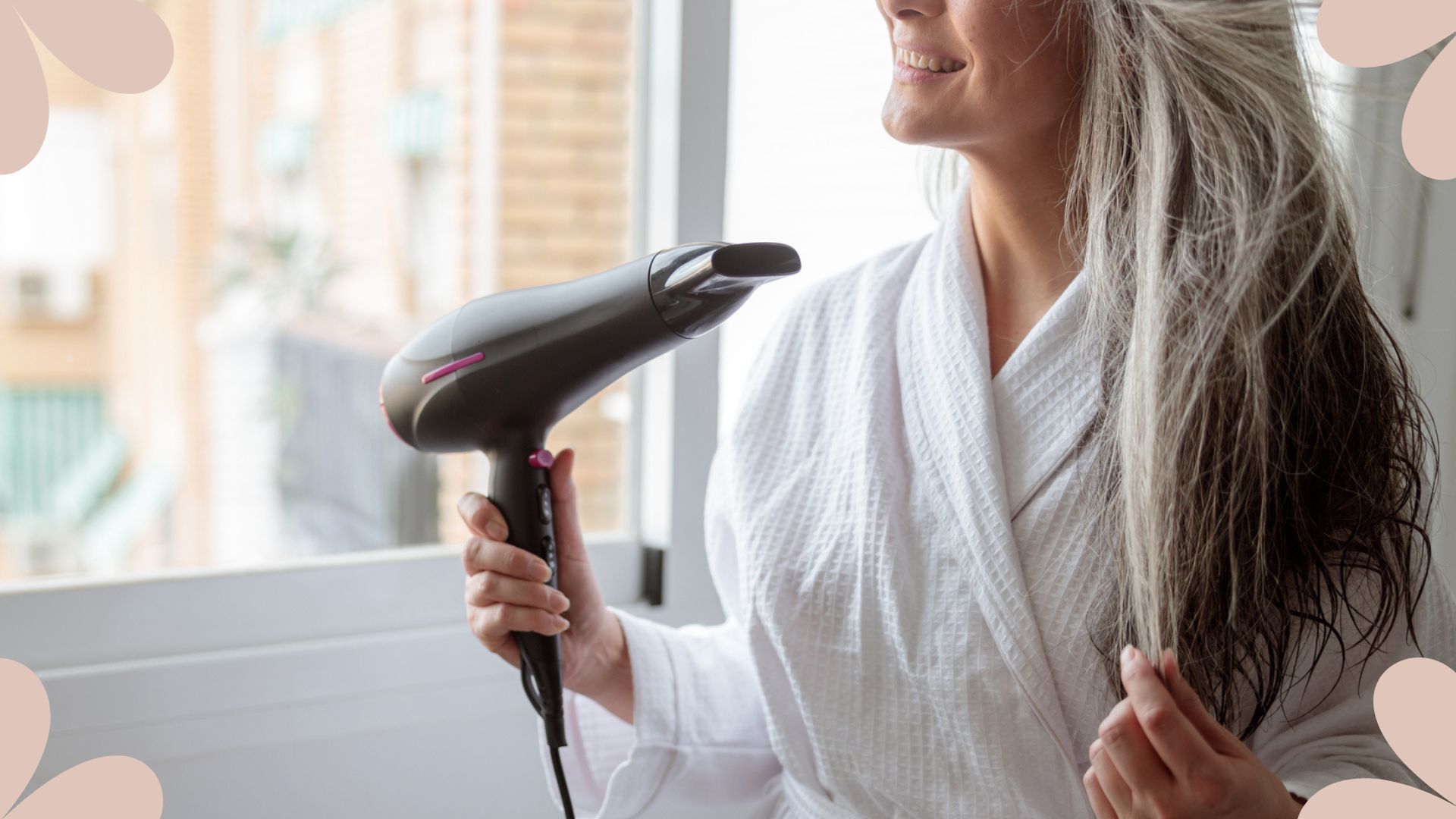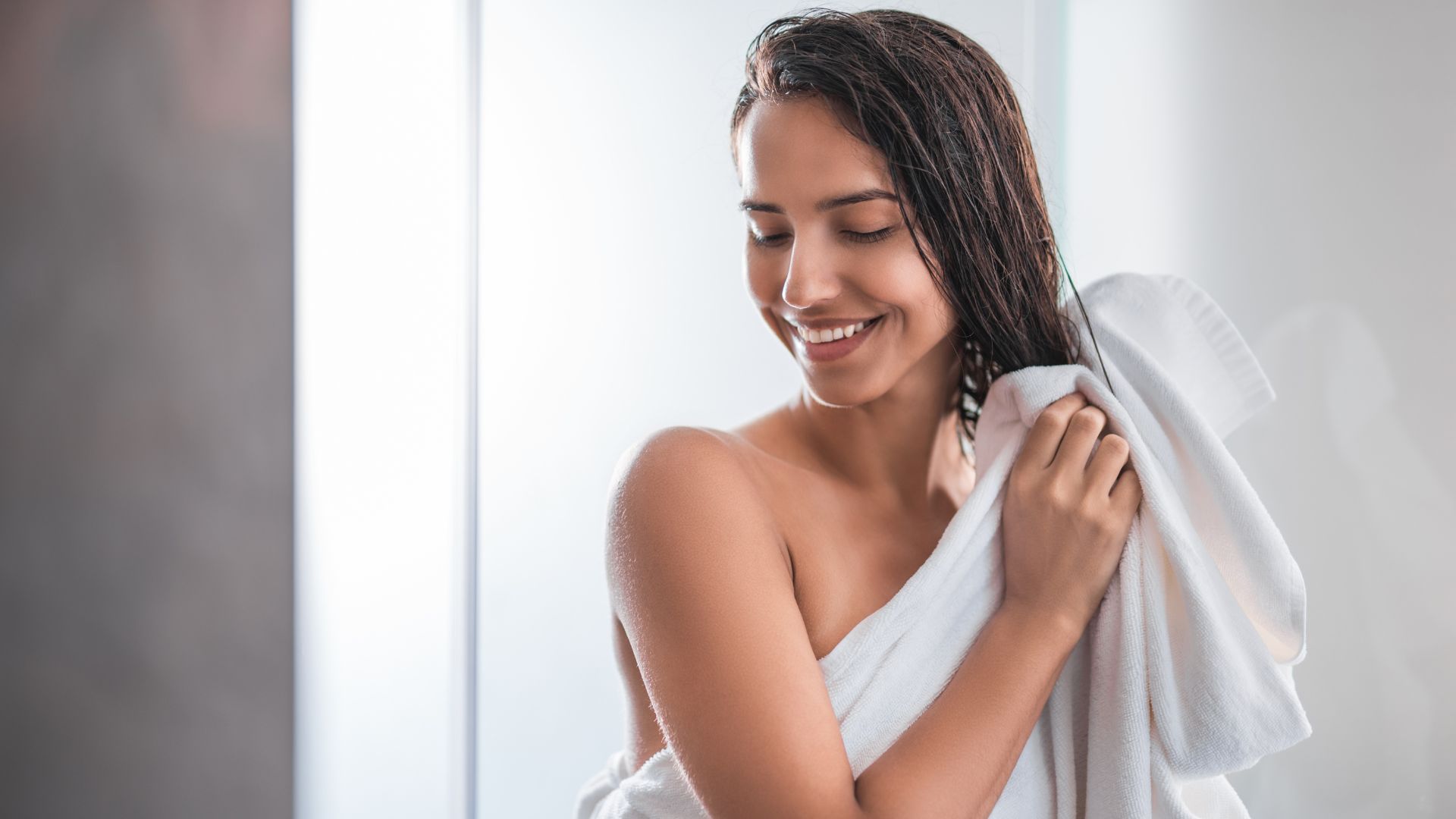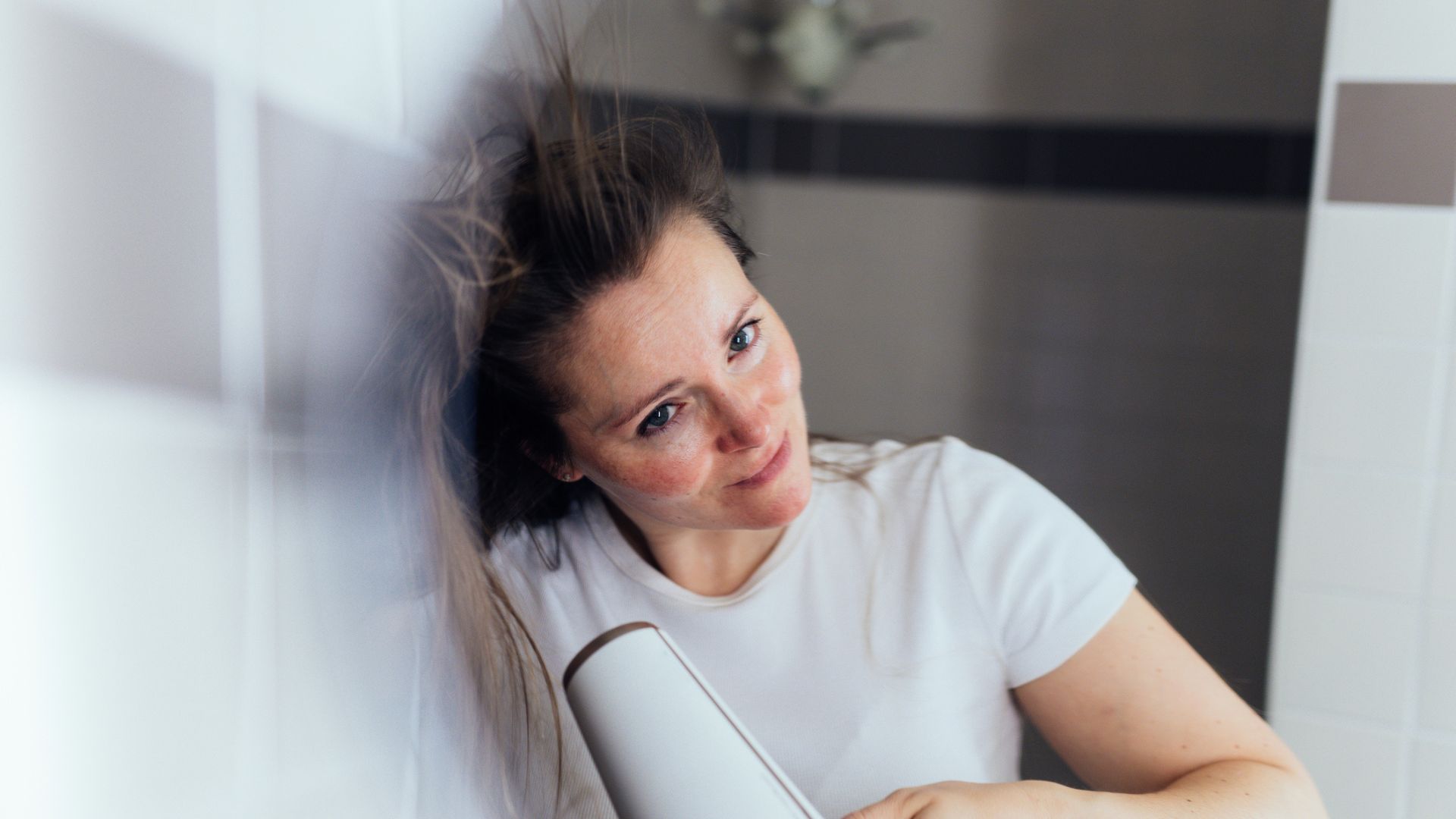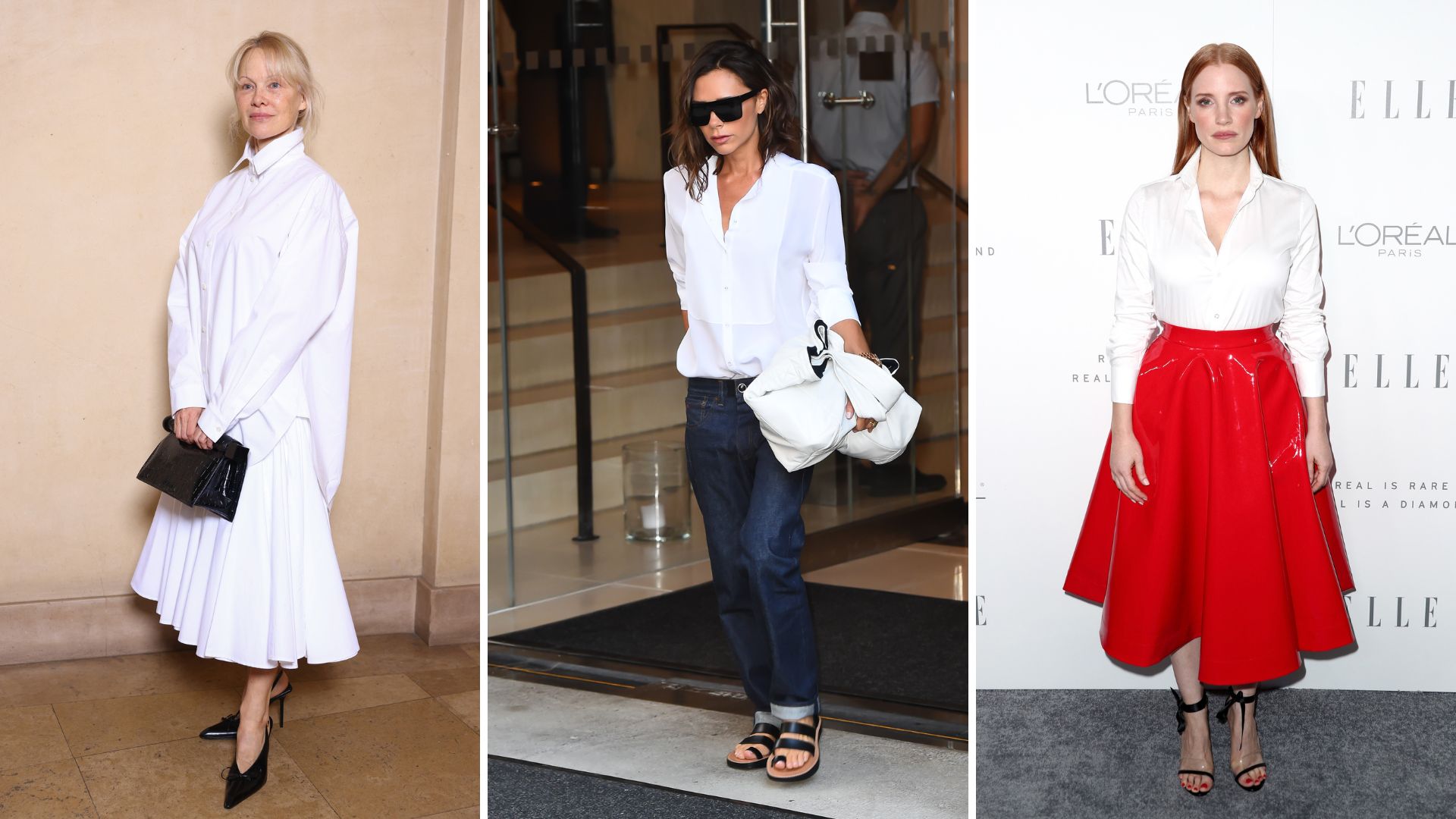Air dry vs blow dry - which is better for your hair?
Hair experts weigh up the air dry vs blow dry debate, to fully understand the healthiest way to dry your hair


It's easy to assume when it comes to the air dry vs blow dry debate that the less heat you use on your hair, the better. The truth is a little bit more complicated than that.
The question of whether hair dryers damage hair is the main factor to consider. We all know we should be careful blasting away with heat styling, even when using the best hair dryers. No matter how careful you are, there are no two ways about it - heat causes damage. So, then learning how to air dry hair and style hair without a hair dryer is the ultimate key to healthier, happier hair, right?
Not quite, says ghd's chief scientist Dr Tim Moore. "When hair is wet, the hair fiber will swell and become weaker," he explains. "Prolonged exposure to water will mean more chance of damage to the hair since it is in this weakened state."
There are, of course, plusses to letting your hair air dry, in the same way that it's important to acknowledge that you can learn how to blow dry hair with minimal damage. I spoke to Dr. Moore and Consultant Trichologist Susie Hammond to get their take on the full air dry vs blow dry debate, to really narrow down which is better for your hair.
Air dry vs blow dry - which is better for your hair?
What is the healthiest way to dry your hair?
Before getting into the finer details of the air dry vs blow dry debate, let's get straight to the point - which is better for the health of your hair? Both experts agreed that carefully drying with a hairdryer is better for your hair than letting it air dry because it's so fragile when it's wet. Hammond shared that you can take extra steps to prevent damage, like always using the best heat protection spray before styling, and using a vented brush to let the heat flow through.
Dr. Moore breaks shares his detailed guide for the healthiest way to dry hair.
- STEP ONE: "Start by scrunching when towel drying - do not rub the towel across hair, hair is weak so can be broken more easily when wet.
- STEP TWO: Spritz wet hair with heat protect spray. This provides an invisible barrier against everyday heat damage and provides cuticle protection, preventing vertical cracks inside the cuticle which fundamentally causes split ends and irreversible damage
- STEP THREE: Use your hairdryer on a low heat setting - high temperatures can cause damage to wet hair so start at the lowest setting and very slowly increase the heat as the hair becomes drier.
- STEP FOUR: When you start to feel the hair warm up, that’s your signal to start to turn the heat up on your hairdryer to complete and set your style."
Is air drying more damaging than blow drying? We settle the air dry vs blow dry debate

It can be. It all depends on the way you're handling your hair when you're air-drying. Equally, if you're blasting your hair on the hottest setting, that will cause more damage than leaving it to dry naturally.
Sign up for the woman&home newsletter
Sign up to our free daily email for the latest royal and entertainment news, interesting opinion, expert advice on styling and beauty trends, and no-nonsense guides to the health and wellness questions you want answered.
Hammond explains, "Air drying is not necessarily bad for the hair, but do be aware that the hair is much more elastic – and therefore more prone to breakage – when it’s wet, so handle it with care." Another aspect that's often forgotten about in the air dry vs blow dry debate is scalp care, she says. "I prefer not leaving the scalp damp for long periods and definitely not overnight. A humid environment can encourage the overgrowth of the yeasts that live naturally on our scalps, potentially triggering dandruff."
She shares that there are some extra steps you can take to protect your strands when you're air drying, if that's your preferred styling method.
- "When the hair is wet use a wide-tooth comb to detangle, starting at the ends and then gradually working further up the hair.
- Using a leave-in conditioning, detangling spray can help minimize damage when combing through, and during styling.
- Using a good, gentle brush is vital too, as some can be very damaging to the protective outer layer of the hair shaft.
- Use a regular hair mask to put some strength and elasticity back into the hair."
Is it better to air dry or blow dry for frizz?
Generally, it's better to blow dry to prevent frizzy hair. Drying hair downwards (going down the hair from the root) will smooth down hair cuticles for a shinier, sleeker finish. This will also help your hair look healthier, says Tammie Mayer, Zuvi's Global Education Director. "The healthiest hair always looks shiny because the hair cuticles lay flat," she explains. "This means that the light is able to bounce off it without distorting."
If you have very fine or flyway-prone hair and find that your dryer worsens frizz, be sure to use a smoothing heat protection product, to smooth and seal cuticles. You can also prevent frizz from forming while air-drying by using a leave-in conditioner or a dedicated air-dry cream. Touching or zhuzhing your hair when it's wet will cause frizz, so be as minimal as possible with touch when you're air drying.
Air dry vs blow dry - the full debate

Really the air dry vs blow dry decision is a personal one. Of course, there are hard facts that can't be ignored, the main ones being that hair is fragile when it's wet, and heat causes damage. But, as long as you're aware of the risks in both styling scenarios, you can pick the best technique for you. To make it easier, let's break down the potential pros and cons for both.
Air drying: Positives and negatives
PROS
- Requires zero effort: All you really have to do to air-style is to leave your hair alone for a couple of hours.
- Requires zero technique: Not all of us want to spend hours getting bent out of shape learning how to do a home blow dry. You don't have to learn any skills to air dry - in fact, you don't have to do anything.
- Is 'safer' than using heat: Especially if you know the risks of breakage when hair is wet. If you're very gentle with your wet hair, it should cause very little to no damage.
- Better for warmer weather: The last thing anyone wants to do during a heatwave is to grapple with a hot hairdryer.
- Hair dryers are expensive: Sure, you don't have to spend hundreds of pounds on one, but regardless, it's still a big-ticket purchase, that you could arguably do without.
CONS
- Can cause damage: You have to be very careful with wet hair, ideally barely touching it.
- It's a slow process: Do you really want to wait around for hours, barely moving, in case you accidentally nudge a strand? And forget going outside - you can't risk getting caught by a gust of wind.
- Hair isn't as shiny: A blow dry leaves cuticles flat, which makes hair look smoother and shinier. That can't be achieved by air drying.
- It can cause irritation dandruff: If you're wondering how to get rid of dandruff, swapping from air drying to blow drying could be the answer - Hammond warned that leaving your scalp damp for an extended period can cause issues.
- Hair can look flatter: The volume boost from a blast of air or using rollers can't be replicated by air drying.
- It's not very versatile: With blow drying, you can swap to smooth or bouncy styles - with air drying, you're just stuck with your natural hair texture.
Blow drying: Positives and negatives
PROS
- When done correctly, the damage is minimal: There's a lot of scaremongering about heat damage, but if you follow Dr. Moore's steps and start with very low heat, it's the safest way to dry hair.
- Hair is shinier: Nothing beats the gloss of a smooth, shiny blow dry - either in salon or an home.
- It's quick: Most blow dries take under 15 minutes, no matter how long your hair is. You won't have to wait around for it to dry naturally, which can take hours for thicker hair types.
- You can create different styles: The power of heat means you can create poker-straight, wavy, or curly textures on most hair types.
- Styles can last longer: Drying hair with a hair dryer can set styles in place, and it will give the hair a lift from the scalp - this means it won't get greasy as quickly.
CONS
- Heat damage is still heat damage: Will you really go low and slow, or will you be tempted to give hair a quick hot blast to get the whole thing over quicker?
- Hair dryers are expensive, and can be confusing to decipher: It's a big outlay, no matter what your budget, and with hundreds of options out there with very high-tech gadgetry, how do you know you're using the right one?
- Not without effort: If you can't afford to get regular salon blow-dries (it's the first thing we'd spring for if we won the lottery), it's a lot of work to do DIY.
- Learning to style isn't simple for everyone: Even when you know how to use a hair dryer brush, it can be a bit of a skill to master.
- The 'wrong' dryer will wreak havoc on hair: We've all accidentally blitzed hair with a hotel drier - it's worryingly easy to do.
Air dry vs blow dry - our beauty editor's verdict
One of the reasons I was so interested in discussing the air dry vs blow dry debate is that I have skin in the game - I'm a big fan of air drying. Partly down to laziness, but slightly down to fear. I have curly hair, so I've always been quite cautious of overdoing heat in case it causes any undue damage to my already bleach-fried curls. Even the best hair dryers for curly hair can still put delicate hair at risk.
While I was initially quite concerned when both experts raised their concerns about air-drying, when I dug deeper, I realized it's about how you're doing it. From years of following the curly girl method, I'm well-versed in the dangers of touching hair when it's wet. Once I've added my styling products, I tend to leave it completely alone - ideally while standing quite still until it's completely dry (this is only a mild exaggeration).
The expert verdict is that it's better to very gradually dry hair with a hair dryer, rather than leaving it in the vulnerable wet condition for too long. It's a method I'll definitely be using next time I pick up a hair dryer. If you're a daily blow dryer, it's a handy reminder that low and slow is the way to go.
While this air dry vs blow dry debate seems to swing more favorably towards the blow dry, don't let this put you off air drying if that's your favored method of styling. It's all about how you're drying. If you're gently air-drying with minimal touch, you're probably causing very little damage. Equally, if you're using heat on your daily, it's likely more harmful than leaving it to dry naturally. It's totally up to you to gauge the best method for you - for your hair type, skill level, and style preference.

Rhiannon Derbyshire is the Senior Beauty Editor for Woman & Home.
She started interning for glossy magazines in 2011 while working alongside her Fashion Journalism degree. There, she was lured to the beauty desk, seduced by red lipsticks, posh shampoos, and every skincare product imaginable. 10+ years into her career, she now writes about all things skincare, haircare and makeup for six national titles and interviews celebrities, experts and brand founders. She oversees and judges products for the Woman & Home skin, hair and beauty awards, testing hundreds of products yearly.
With 3A curls, Rhiannon specialises in writing about curly hair routines and has a penchant for red lipsticks and minimalist skincare routines - with a bit of LED therapy thrown in.
-
 Do you know what your stems are saying? These are the most popular flowers and what they symbolise
Do you know what your stems are saying? These are the most popular flowers and what they symboliseI break down different flowers and what they symbolise so that you can say more whilst speaking less with a truly beautiful bouquet
By Laura Honey
-
 Celebrities who built their looks around a simple, timeless white shirt
Celebrities who built their looks around a simple, timeless white shirtA white shirt should be in every woman's wardrobe - and these celebrities prove all the ways to expertly style one
By Jack Slater